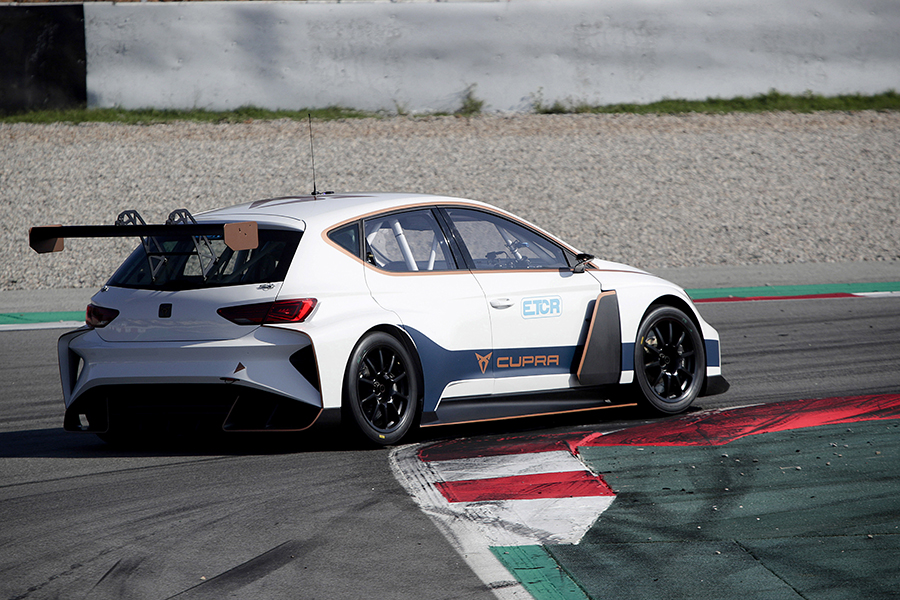Cupra Racing tester Jordi Gené, the man who is developing the Cupra e-Racer for the ETCR, explains how a driver must adapt his style in order to exploit the potential of an electric-powered racing car.
"Driving this car is more difficult in general. For example in cornering, when you arrive to the apex you have to brake a little more because you carry more weight. However, this weight is very well distributed, centred and very low, and it doesn’t play any tricks, nor compromise your work. This weight is more noticeable in the long corners, in which the car has clear tendency to open at the exit. However, on the straight it accelerates a lot, and what you have sacrificed applying more braking, it´s compensated. It's a different driving strategy."
A strategy that also includes keeping energy under control: "There are more tools than in a conventional car. You have different ways of regenerating energy and you have to optimize them all to get the longest possible autonomy. In the race, you have to be very effective in this to be able to reach the end at a competitive level. All this, you can change from the steering wheel. You can ask that during braking, the car will charge the batteries more, or that it will only charge them when you lift the gas pedal, you can manage the traction control of each wheel separately... There are many factors that you can change from the steering wheel, which means that the driver has to think a lot more, controlling not only the level of battery charge, but the cells’ and engines’ temperatures..."
Racing an electric-powered car requires a more careful approach: "What is more complicated is everything related to the management of energy and the new electronics. We are used to combustion cars, going out for ten laps thoroughly and the only things that change are tyre degradation and brake effectiveness. With the e-Racer the strategy starts from the pit exit, and you pay it in the last laps if you have done something wrong. All these factors change the behaviour of the car as well. If you regenerate more energy, you have to compensate it with the braking balance because when you raise your foot off the throttle you slow down the rear wheels with the electric engine. Acceleration changes depending on the power mode and braking references change on each lap depending on the range of power and retention, because you arrive at the apex at different speeds. For a driver this is a major challenge, much more than what it may seem from outside. It will be very interesting."
